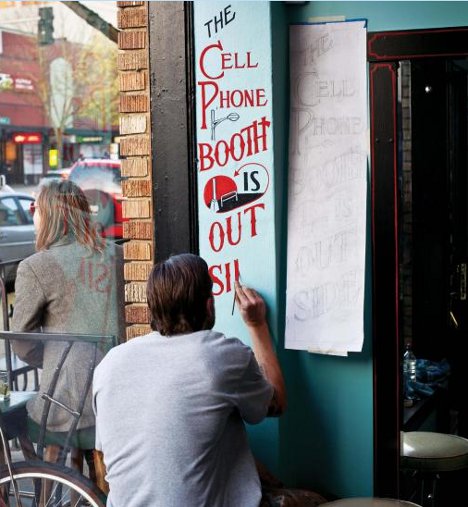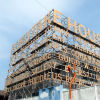[ By Delana in Design & Graphics & Branding. ]

While technology usually makes things faster, it rarely produces the kind of unique and soulful results that come from the hearts and hands of humans. The sign industry fell as a casualty to a world obsessed with technology’s quicker, cheaper, utterly identical products. But a new generation of traditional sign painters is revitalizing this amazing trade, bringing the soul back to the business of storefronts and billboards.


(all images via: Princeton Architectural Press)
A new book from filmmakers Faythe Levine and Sam Macon details the history and current state of the surprisingly fascinating sign painting industry. (Princeton Architectural Press, the book’s publisher, provided WebUrbanist with a copy of the book for the purposes of this article.) The book tells the stories of sign painters, both young and old, and their take on their unique industry. Each segment of the book includes examples of the painters’ work and often glimpses into their workspaces.


As recently as the 1980s, it was impossible to walk down any street in America without seeing hand-painted signs of some type. Storefronts, billboards, murals, banners, and even street signs were hand-lettered with brushes and paint, relying entirely on the skill of the painter to make them readable and eye-catching. And their skill is considerable. Just imagine trying to paint a professional-looking sign – one that can not only rival a vinyl sign but outstrip it in terms of individual style – using nothing more than a toolkit of brushes and some jars of paint. The vast majority of us couldn’t do it.


In more recent years, distressingly homogeneous signs have largely – though not completely – taken the place of these carefully hand-lettered ones. The technology used to create signage today is fast and cheap, but lacks that human touch. Entire streets full of store fronts in any given city look exactly the same – laser-cut vinyl letters don’t allow for any type of personality or variation, and that is to the detriment of not only the sign painters, but also the general public and – maybe most significantly – the store owners themselves.

According to Sean Barton, one of the sign painters featured in Levine and Macon’s book, many business owners don’t want to invest in their shops like they used to. They would rather slap up a vinyl sign that costs next to nothing than take pride in their livelihood. A great-looking storefront with hand-painted signage is bound to attract more business than a shop that looks exactly the same as 20 other shops on the street. This is beginning to dawn on many business owners, says Barton – they are realizing the power of hand-painted signs and showing a new appreciation for this nearly-lost craft.


And that is what this resurgence of hand-painted signage is about: the power of individuality. Seeing the same lettering, the same color schemes, the same type of signs everywhere we go has made us immune to the sad fact that uniformity has taken over our cities. This is never more apparent than when we walk by a shop with carefully hand-painted signs. It, almost without fail, will seem like the coolest and most interesting shop on the street, even before we walk through the door. Why? Because that store owner took pride in his or her business and chose to display the individuality that other shops are missing.


Many sign painters working today began their painting careers under very different circumstances: as graffiti writers. It makes sense, in a way, to move from the illegal side of painting in public to the legal side. But can they possibly get as much enjoyment and satisfaction from painting the letters and logos of their clients as they did from tagging boxcars? Apparently, the sign painting business offers enough of a challenge to keep these modern-day artisans fulfilled. In sign painting, as in graffiti, planning and spacing are key – and in both, the painter’s personality and humanity shine through.

There is a deeper message here, not only for business owners but for all of America. When corporations began taking over the towns and cities with their homogeneous style and predictable experiences, we lost something. We lost the personable nature of Main Street and the colorful mish-mash of downtown. As our culture begins to pull away from the trap of corporate sameness, we will no doubt see at least some businesses return to the traditional art of hand-painted signs. And the sign painters will, as always, remain behind the scenes as the people who dramatically impact our buying habits, but about whom we rarely stop to think.
Want More? Click for Great Related Content on WebUrbanist:






[ By Delana in Design & Graphics & Branding. ]
[ WebUrbanist | Archives | Galleries | Privacy | TOS ]

WebUrbanist




















You must be logged in to post a comment.